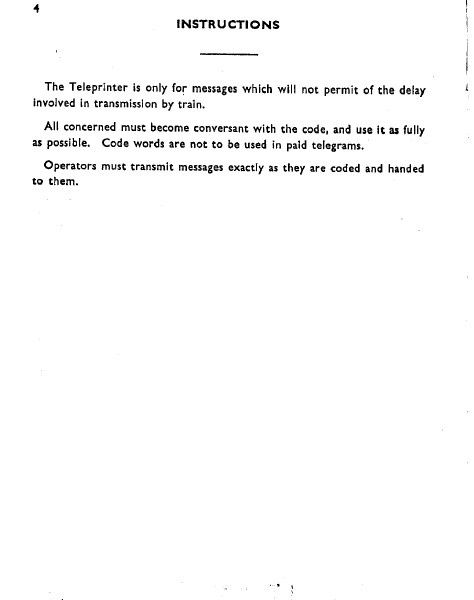Unlock the Mystery: What is a Telecode and How Does it Impact Your Daily Life? In today's digital age, security measures are more important than ever. Whether you're managing your finances online or engaging with various digital services, understanding the mechanisms that protect your information is crucial. One such mechanism is the telecode, a concept that may seem obscure but plays a significant role in securing your daily transactions.
A telecode is more than just a sequence of numbers; it serves as a key to accessing certain services, ensuring that only authorized individuals can proceed. From banking to telecommunications, telecodes are employed to safeguard sensitive data and streamline operations. As we delve deeper into this article, we will explore what exactly a telecode is, its applications across different sectors, and how it impacts your daily life, providing insights into maintaining security in an increasingly interconnected world.
Electronic Banking Security Guidelines emphasize the importance of using a customer telecode to authorize transactions and access account information. When opening an account, you have the option to provide a telecode that serves as proof of identity. This ensures that any interaction with your bank, whether through phone or internet banking, is secure and protected against unauthorized access. Understanding how to safeguard your telecode, along with other personal identifiers like PINs and passwords, is essential for preventing misuse and handling queries related to disputed transactions effectively.
Understanding Telecode Functionality
In the realm of electronic communications agreements, a telecode refers to a unique four to seven digit number issued specifically to enable access to phone-based services. This definition is widely recognized and utilized in legal contracts, particularly those involving electronic communications. The relevance of telecodes extends beyond mere identification; they play a pivotal role in securing interactions over telephone lines, ensuring that only authorized users can gain access to specific services.
Telecodes are not merely random sequences of digits; they are meticulously assigned to ensure uniqueness and prevent duplication. This uniqueness is crucial in maintaining the integrity of phone-based services, where multiple users might be accessing the system simultaneously. By incorporating telecodes into their service protocols, organizations can enhance security measures and provide a reliable method for user authentication. This approach not only protects individual users but also safeguards the overall infrastructure from potential breaches.
Moreover, the implementation of telecodes in electronic communications agreements underscores the importance of adhering to standardized practices. These practices help mitigate risks associated with unauthorized access and ensure compliance with industry regulations. As technology continues to evolve, the role of telecodes in maintaining secure communication channels becomes increasingly vital, reinforcing their significance in both legal and operational contexts.
Exploring Telecode Applications
Within the context of internet banking, a telecode functions similarly to a personal identification number (PIN), serving as a critical component for accessing phone banking services. Typically consisting of four to seven digits, this code acts as a gateway to your financial information, enabling secure transactions and inquiries. For many users, the telecode represents an additional layer of security, complementing other authentication methods like passwords and one-time codes.
The integration of telecodes into internet banking systems reflects a broader trend towards enhancing cybersecurity measures. By requiring users to input a telecode before proceeding with transactions, banks can significantly reduce the risk of fraudulent activities. This approach not only protects individual accounts but also strengthens the overall security framework of the banking sector. Users are encouraged to safeguard their telecodes diligently, treating them with the same level of importance as other confidential information.
Beyond banking, telecodes find applications in various industries, including telecommunications and transportation. In railway applications, for instance, telecode time division multiplexers facilitate the transmission of numerous controls and indications, ensuring high integrity and reliability in communication systems. This versatility highlights the adaptability of telecodes across diverse fields, underscoring their value as a versatile tool for securing and streamlining operations.
Legal Perspectives on Telecodes
In legal terms, a telecode is defined as a four to seven digit number issued to access specific phone banking services, such as ANZ Phone Banking and mobile phone banking activation codes. This definition is commonly referenced in contracts and agreements, emphasizing the necessity of clear terminology to avoid ambiguity. Legal professionals often utilize telecodes in drafting agreements related to electronic communications, ensuring that all parties involved understand their responsibilities and obligations.
The inclusion of telecodes in legal documents serves to reinforce accountability and transparency in business operations. By explicitly defining the role and function of telecodes, organizations can establish robust frameworks for managing access to sensitive information. This clarity is particularly important in cases involving disputes or breaches, where precise definitions can aid in resolving issues efficiently and fairly. Furthermore, the use of telecodes in legal contexts demonstrates a commitment to upholding industry standards and protecting consumer rights.
As technology continues to advance, the legal landscape surrounding telecodes is likely to evolve, reflecting new challenges and opportunities in the field of cybersecurity. Staying informed about these developments is crucial for both businesses and consumers, enabling them to adapt to changing regulations and maintain secure communication practices. Through ongoing education and awareness, stakeholders can harness the full potential of telecodes while minimizing associated risks.

